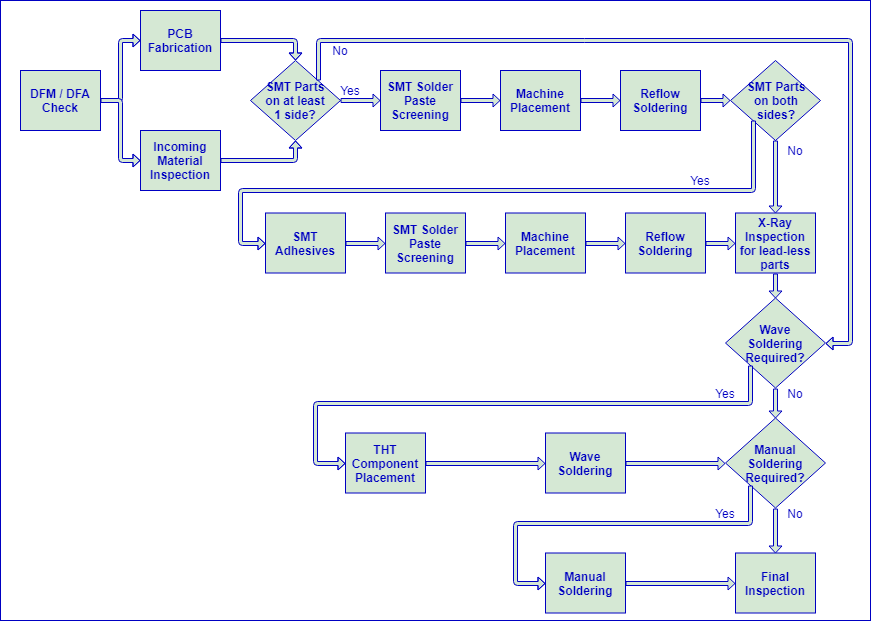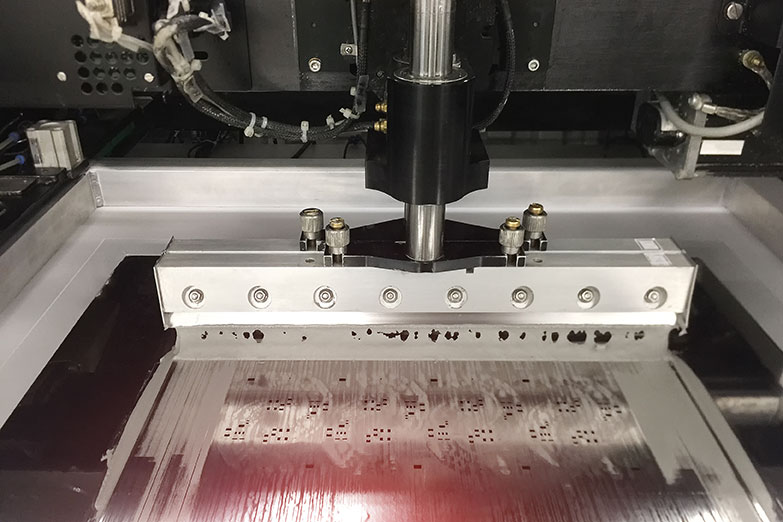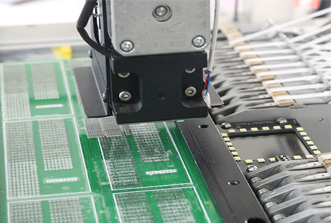If you're looking to achieve flawless PCB manufacturing, mastering Surface Mount Technology (SMT) assembly is key. This process involves using specialized tools and techniques to mount electronic components directly onto the surface of a printed circuit board (PCB). In this comprehensive guide, we'll explore the essential SMT assembly tools list, including the SMT stencil printer, pick and place machine for SMT, reflow oven for SMT, AOI system for SMT, and SMT rework station. We'll also cover best SMT assembly practices and tips for improving SMT yield to help you optimize your production process.
What is SMT Assembly and Why Does It Matter?
Surface Mount Technology (SMT) is a method used in electronics manufacturing to place components directly onto the surface of a PCB. Unlike older through-hole technology, SMT allows for smaller components, higher circuit density, and faster production speeds. This technology is the backbone of modern electronics, enabling the creation of compact devices like smartphones, laptops, and IoT gadgets. Mastering SMT assembly ensures higher efficiency, reduced costs, and improved product reliability—crucial factors for staying competitive in the electronics industry.
In the sections below, we'll dive into the tools and techniques that make SMT assembly successful, helping you streamline your workflow and achieve consistent results.

SMT Assembly Tools List: The Must-Have Equipment for PCB Manufacturing
To achieve precision and efficiency in SMT assembly, you need the right tools. Below is a detailed SMT assembly tools list, covering the essential equipment required for a seamless production line. Each tool plays a critical role in ensuring the quality and reliability of your PCBs.
1. SMT Stencil Printer: Precision Solder Paste Application
An SMT stencil printer is the first step in the SMT assembly process. This machine applies solder paste to the PCB through a stencil, ensuring that the paste is placed accurately on the pads where components will be mounted. Precision is vital here, as uneven or misplaced solder paste can lead to defects like bridging or insufficient solder joints.
Modern stencil printers offer features like automatic alignment, adjustable pressure settings, and vision systems for accuracy. For high-volume production, fully automated stencil printers can handle thousands of boards per hour, while manual or semi-automatic options are ideal for prototyping or low-volume runs.
Key Tip: Regularly clean the stencil to prevent clogging, and use a stencil thickness of 0.1 to 0.15 mm for fine-pitch components to avoid excess paste.

2. Pick and Place Machine for SMT: Speed and Accuracy in Component Placement
A pick and place machine for SMT is the heart of the assembly line. This equipment uses robotic arms or vacuum nozzles to pick up surface-mount components from reels or trays and place them precisely onto the PCB. High-end machines can place over 100,000 components per hour with placement accuracy down to 0.01 mm, making them indispensable for high-speed production.
For smaller operations or prototyping, desktop pick and place machines offer a cost-effective solution with lower throughput but sufficient accuracy for most applications. When selecting a machine, consider the range of component sizes it can handle—some machines support tiny 0201 components, while others are designed for larger parts like connectors or ICs.
Key Tip: Regularly calibrate the machine’s vision system to ensure accurate component recognition and placement, especially for fine-pitch or micro-BGA components.

3. Reflow Oven for SMT: Creating Strong Solder Joints
A reflow oven for SMT is used to heat the PCB after component placement, melting the solder paste to form permanent electrical and mechanical connections. The oven follows a precise temperature profile with stages like preheat, soak, reflow, and cooling to ensure uniform heating and prevent thermal shock to components.
For example, a typical reflow profile might include a preheat stage at 150-180°C for 60-90 seconds, a reflow peak at 235-250°C for 20-40 seconds, and a cooling phase to solidify the joints. Advanced reflow ovens offer multiple heating zones (up to 10 or more) for better control, while smaller benchtop ovens are suitable for low-volume or prototype work.
Key Tip: Monitor the reflow profile using a thermal profiler to ensure it matches the solder paste manufacturer’s specifications, as deviations can cause defects like tombstoning or voiding.
4. AOI System for SMT: Automated Quality Control
An AOI (Automated Optical Inspection) system for SMT is a critical tool for quality assurance. This machine uses high-resolution cameras and advanced algorithms to inspect PCBs after reflow soldering, detecting issues like misaligned components, missing parts, solder defects, or polarity errors. AOI systems can inspect thousands of components per minute, far surpassing manual inspection in speed and accuracy.
Some AOI systems also offer 3D imaging to measure solder joint height and detect subtle defects like insufficient solder. Integrating AOI into your SMT line reduces the risk of defective boards reaching customers, saving time and costs on rework.
Key Tip: Update the AOI system’s inspection library regularly to account for new component types or design changes, ensuring accurate defect detection.
5. SMT Rework Station: Fixing Defects with Precision
Even with the best processes, defects can occur. An SMT rework station is designed to repair or replace faulty components without damaging the PCB or nearby parts. These stations typically include hot air tools, soldering irons, and sometimes infrared heating for delicate work on fine-pitch components like QFN or BGA packages.
For BGA rework, advanced stations use split-vision systems to align the component with PCB pads accurately, while precise temperature control prevents overheating. Rework stations are also useful for prototyping, allowing engineers to test different components or configurations.
Key Tip: Use a preheater to warm the PCB before rework to minimize thermal stress, especially for multilayer boards with high copper content.
Best SMT Assembly Practices: Tips for Optimal Results
Beyond having the right tools, following best SMT assembly practices is crucial for achieving high-quality results. These practices help minimize defects, improve efficiency, and ensure consistency across production runs.
1. Design for Manufacturability (DFM)
Start with a PCB design that’s optimized for SMT assembly. Place components with adequate spacing to avoid interference during placement or soldering. Follow standard pad sizes and shapes for each component type, and ensure fiducial marks are included for machine alignment. A well-thought-out design can reduce placement errors by up to 30% and simplify inspection.
2. Solder Paste Management
Use fresh solder paste and store it at the recommended temperature (typically 2-10°C) to maintain its viscosity and performance. Allow the paste to reach room temperature before use to prevent condensation, which can affect print quality. Additionally, use a consistent stencil design with aperture ratios of 0.66 or higher for fine-pitch components to ensure proper paste release.
3. Component Storage and Handling
Store components in moisture-proof packaging with desiccant to prevent oxidation or moisture absorption, especially for sensitive parts like ICs or LEDs. Use an ESD-safe environment during handling to avoid static damage, as even a small discharge (e.g., 100V) can harm sensitive chips.
4. Regular Equipment Maintenance
Schedule routine maintenance for all SMT equipment to prevent downtime or quality issues. For example, clean the stencil printer after every 5-10 boards to avoid paste buildup, and check the pick and place machine’s nozzles for wear every week. A well-maintained line can improve throughput by 15-20% and reduce defect rates significantly.
5. Operator Training
Invest in training for your team to ensure they understand the nuances of SMT assembly. Operators should be familiar with equipment settings, troubleshooting common issues, and interpreting AOI reports. A skilled workforce can catch potential problems early, reducing scrap rates and rework costs.
Improving SMT Yield: Strategies for Higher Success Rates
Improving SMT yield— the percentage of defect-free boards produced—is a top priority for any manufacturer. Higher yields mean less waste, lower costs, and faster delivery times. Here are proven strategies to boost your SMT yield.
1. Optimize Reflow Profiles
As mentioned earlier, a well-tuned reflow profile is essential for strong solder joints. Test different profiles for new board designs or paste types, and use a thermal profiler to measure temperatures across the PCB. Aim for a peak temperature 20-30°C above the solder’s melting point, but avoid exceeding component specifications (often 260°C max) to prevent damage.
2. Minimize Human Error
Automate as many processes as possible to reduce manual intervention, which often introduces errors. For instance, use automatic feeders for component reels in pick and place machines to avoid misloading. For tasks requiring human input, implement double-check protocols or visual aids to guide operators.
3. Implement Statistical Process Control (SPC)
Use SPC to monitor key metrics like solder paste volume, placement accuracy, and defect rates in real-time. By analyzing trends, you can identify process drifts before they cause significant issues. For example, if solder paste volume drops below 80% of the target consistently, it may indicate a stencil wear issue that needs addressing.
4. Conduct First Article Inspection (FAI)
Before full production, perform a first article inspection on a small batch of boards. Verify component placement, solder quality, and functionality against design specs. FAI can catch setup errors or design flaws early, preventing costly defects in larger runs. Aim for a defect rate below 1% during FAI before scaling up.
5. Analyze and Learn from Defects
When defects occur, conduct root cause analysis to understand why. Was it a placement error, a soldering issue, or a component fault? Use AOI data and rework logs to track recurring issues, and adjust processes accordingly. Over time, this feedback loop can improve yields by 10-15% or more.
Conclusion: Elevate Your SMT Assembly with the Right Tools and Techniques
Mastering SMT assembly is a game-changer for PCB manufacturing, enabling faster production, smaller designs, and higher reliability. By investing in essential tools like the SMT stencil printer, pick and place machine for SMT, reflow oven for SMT, AOI system for SMT, and SMT rework station, you can build a robust production line. Combine these with best SMT assembly practices and strategies for improving SMT yield, and you’ll be well on your way to flawless results.
Whether you’re running a small prototype batch or a high-volume production line, the right approach to SMT assembly can make all the difference. Start by assessing your current setup, identifying gaps in equipment or processes, and implementing the tips shared in this guide. With precision and consistency, your PCB manufacturing will reach new heights of quality and efficiency.
At ALLPCB, we’re committed to supporting your SMT assembly journey with resources, expertise, and solutions tailored to your needs. Dive into the world of SMT with confidence, and let’s build the future of electronics together.
 ALLPCB
ALLPCB







